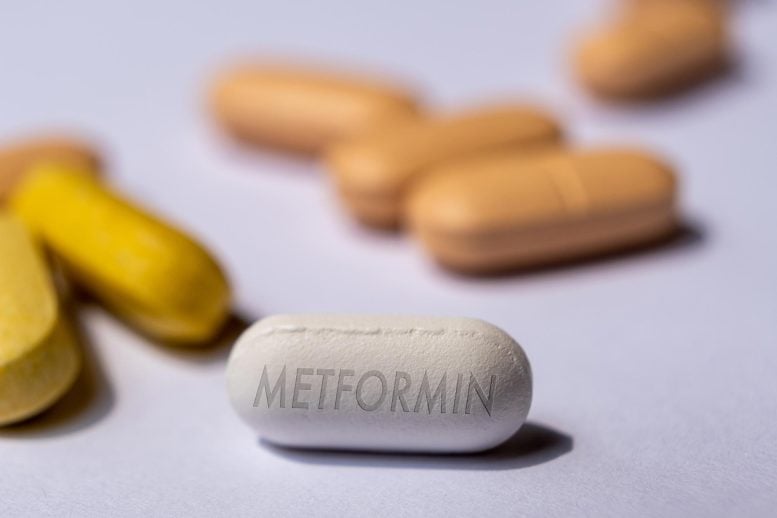
Metformin, the world’s most prescribed diabetes drug, is known for benefits far beyond blood sugar control, yet its precise workings have remained a mystery.
Researchers at Kobe University have now provided the first clinical evidence that the drug alters metal levels in the blood, lowering copper and iron while raising zinc, which may help explain its protective effects.
Metformin: More Than Just a Diabetes Drug
Metformin is the most commonly prescribed medication for diabetes worldwide. In addition to lowering blood sugar, it has been linked to a wide range of positive health effects, including protection against tumors, inflammation, and atherosclerosis. Yet, despite more than 60 years of use, scientists still do not fully understand how it works, which has slowed efforts to design even more effective treatments for these conditions.
Investigating Metals in Diabetes Patients
According to Kobe University endocrinologist Wataru Ogawa, “It is known that diabetes patients experience changes in the blood levels of metals such as copper, iron, and zinc. In addition, chemical studies found that metformin has the ability to bind certain metals, such as copper, and recent studies showed that it is this binding ability that might be responsible for some of the drug’s beneficial effects. So, we wanted to know whether metformin actually affects blood metal levels in humans, which had not been clarified.”
To explore this question, Ogawa and his colleagues conducted a study involving roughly 200 diabetes patients at Kobe University Hospital. Half of the participants were taking metformin, while the other half were not. The researchers compared blood serum samples from both groups, measuring levels of copper, iron, and zinc, as well as indicators of possible metal deficiencies.
First Clinical Evidence of Metal Shifts
In the journal BMJ Open Diabetes Research & Care, the Kobe University team has now published the first clinical evidence of altered blood metal levels in patients taking metformin. They found that patients who take it have significantly lower copper and iron levels and higher zinc levels. Ogawa says, “It is significant that we could show this in humans. Furthermore, since decreases in copper and iron concentrations and an increase in zinc concentration are all considered to be associated with improved glucose tolerance and prevention of complications, these changes may indeed be related to metformin’s action.”
Comparing Metformin and Imeglimin
Recently, Japan has approved the use of imeglimin, a new diabetes drug that is a derivative of metformin but that should not be able to bind metals the same way as its parent. “Imeglimin is thought to have a different method of action, and we are already conducting studies to compare the effects the two drugs have,” says Ogawa.
Towards Smarter Diabetes Treatments
It is not just about understanding the current drugs, however. Ogawa explains the bigger picture, saying: “We need both clinical trials and animal experiments to pinpoint the causal relationship between the drug’s action and its effects. If such studies progress further, they may lead to the development of new drugs for diabetes and its complications by properly adjusting the metal concentrations in the body.”
Reference: “Association of metformin treatment with changes in metal dynamics in individuals with type 2 diabetes” by Natsu Otowa-Suematsu, Kazuhiko Sakaguchi, Tomoko Yamada, Marika Nishisaka, Yasuko Morita, Hayato Fukumitsu, Yukari Katsura, Yuko Okada, Yushi Hirota, Kenji Sugawara and Wataru Ogawa, 31 August 2025, BMJ Open Diabetes Research & Care.
DOI: 10.1136/bmjdrc-2025-005255
This research was funded by the Japan Society for the Promotion of Science (grant 24H00638) and the Manpei Suzuki Diabetes Foundation. It was conducted in collaboration with a researcher from the Kagayaki Diabetes and Endocrinology Clinic in Sannomiya.
Never miss a breakthrough: Join the SciTechDaily newsletter.


4 Comments
https://shorturl.fm/qNyYI
https://shorturl.fm/BLrQh
https://shorturl.fm/SB4Z8
dzj68h